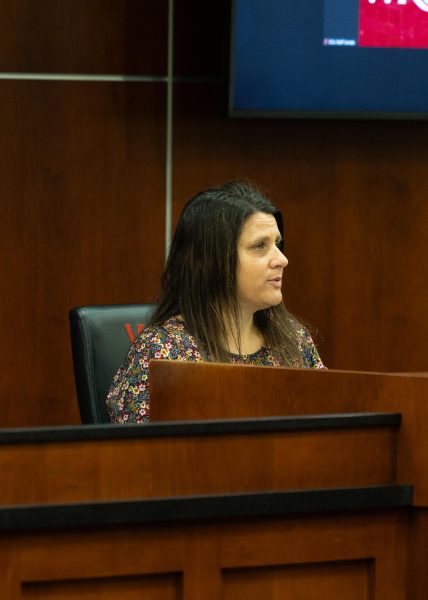Course evals could be done online starting this fall
February 21, 2012
Student course evaluations could be done online beginning this fall after a vote from WKU’s University Senate on Thursday.
An amendment added to the resolution at the Senate meeting stated that nothing will be implemented without being brought to the Senate again.
Now, the switch must be approved by Gordon Emslie, provost and vice president for Academic Affairs, before it can go into effect.
“There are really two different issues, two different aspects of course evaluation,” said Doug McElroy, associate vice president of Enrichment and Effectiveness. “In a sense of this resolution, one is the instrument, that is, the questions that are asked on the assessment. The other, and really the starting point of this whole resolution, is the delivery mechanism.”
Faculty at WKU have been disappointed with the current evaluation method for some time, said Guy Jordan, assistant professor of art.
“[The current method] has never been tested for validity or reliability in any sort of statistical or scientific way,” he said. “It doesn’t take into account the psychometrics of surveys and all of that stuff that is usually done in a very sophisticated way.”
The new method will be more reliable because it can tie students’ responses with their grades. While the identity of the student will still be protected, knowing their grade can help determine if the student is biased in their evaluation or not, Jordan said.
“Is this criticism just somebody who is flaming their professor they don’t like because they’re not doing well and they have a grudge, or is it a student that is a good student who is legitimately concerned about the quality of the class?” Jordan said.
The new program will also allow customized questions. As with Student Input To Effectiveness (SITE), the current system of evaluation, there will be a core set of questions that are university-wide. However, the online system would allow for additional questions by college, department, course, course section or instructor, McElroy said. They could also be routed in different ways.
“For example, a faculty member could choose to add some questions to get information to help them improve the course,” McElroy said. “These added items could be returned only to the faculty member and so would’ve been a part of their evaluation. They would be truly formative — they could use it to improve the course.”
Another advantage is that professors will see their evaluations more quickly. Now, teachers don’t see their results until about halfway through the next semester. For teachers teaching the same courses the next semester, it’s too late to make any changes, Jordan said.
Student Government Association could also add questions to the survey. Jordan said he sent an email to SGA President Billy Stephens, but has not heard back. Stephens told the Herald that the executive board has not yet discussed the matter.
Next year, the SITE evaluation will still be used. It will just be online rather than with pencil and paper. The following year, SITE will be used in addition to piloting a number of public domain instruments. Some courses will test different instruments, but which classes are going to be using which new instrument has yet to be determined, Jordan said.
While student response rate is expected to remain about the same, incentives for responses have been considered, specifically letting students see their grades earlier, Jordan said. There has also been talk of drawings or not allowing students to see their grades at all until their evaluations are done.
“There are quite a lot of things to work out,” McElroy said. “I don’t think there will be any problems that we can’t address, but we do need to talk through some of those things.”
For more information, the Academic Quality committee’s report can be found on the University Senate website.























